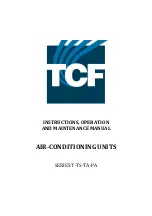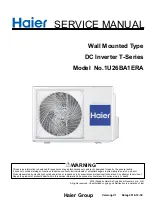
7
Condensate drainage
connection and safe
drainage
Condensate drainage connection
If the temperature falls below the dew point on the
evaporator, condensation will form on the indoor
unit during cooling.
Below the evaporator is a collection tray, which
must be connected to a drain.
n
The condensate drainage line should have an
incline of min. 2%. This is the responsibility of
the customer. If necessary, fit vapour-diffusion-
proof insulation.
n
Route the unit's condensate drainage line
freely into the drain line. If the condensate runs
directly into a sewer pipe, fit a trap to prevent
any unpleasant odours.
n
When operating the unit at outside tempera-
tures below 0 °C, ensure the condensate
drainage line is laid to protect it against frost. If
necessary, fit a pipe heater.
n
Following installation, check that the conden-
sate run off is unobstructed and ensure that the
line is durably leak tight.
min. 2%
Fig. 14: Condensate drainage connection
The condensate hose is designed to be connected
on the right-hand side (as viewed from the front).
Safe drainage in the event of leakages
Local regulations or environmental laws, for
example the German Water Resource Act (WHG),
can require suitable precautions to protect against
uncontrolled drainage in case of leakage to provide
for safe disposal of escaping air conditioning fluid
or hazardous media.
NOTICE!
If condensate is removed via a duct in accord-
ance with DIN EN 1717, ensure that any micro-
biological contamination present on the waste-
water side (bacteria, fungi, viruses) cannot
enter the unit connected to it.
REMKO MXV series
22
Summary of Contents for MVW 222
Page 39: ......
















































